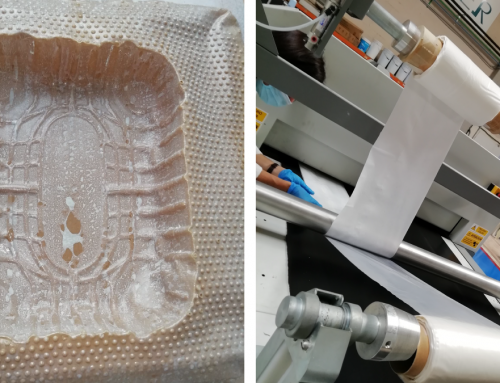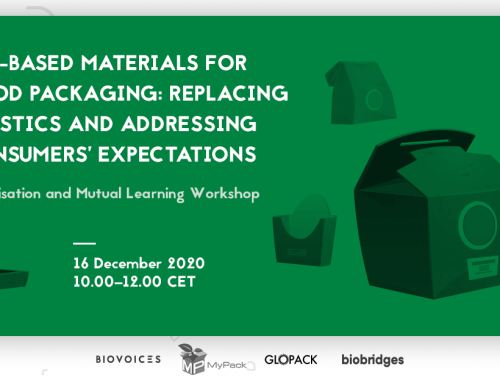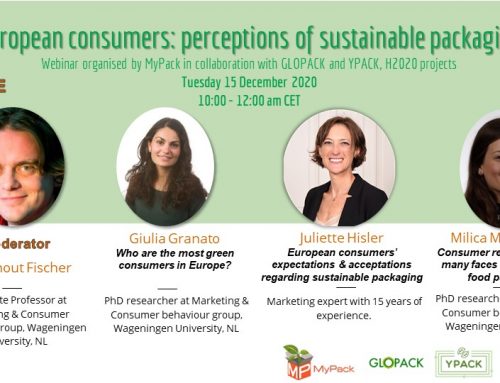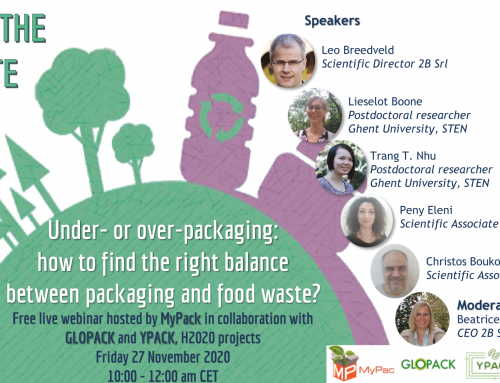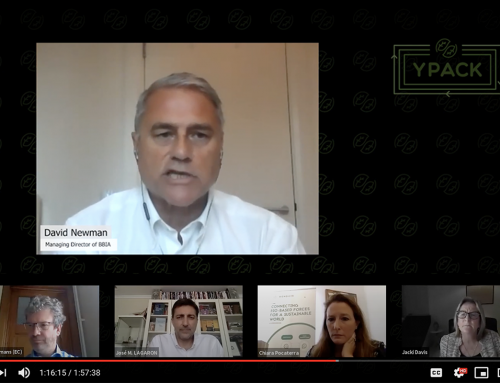Within the past three months, YPACK partners took part in a webinar series organised in collaboration with the EU-funded projects MyPack and GLOPACK. Partners from the three different projects presented some of the projects’ outcomes and discussed the challenges of the bio-based packaging sector.
Dealing with sustainable packaging, these EU-funded projects are moving toward the same objectives. The goal of the MyPack project is to support the market introduction of innovative packaging in order to reduce both food and packaging waste as well as their negative influence on the environment. The GLOPACK project is investigating food packaging with no environmental footprint and the ability to extend the shelf life of food products. And last but not least, the YPACK project aims to scale up and validate innovative food packaging solutions based on industrial by-products with active properties and a passive barrier to reduce food waste by prolonging shelf life.
In total, over 319 people from different fields, mainly research, packaging and food industry but also civil society and international organisations, registered to the three events which were held online on the 28th of October, 27th of November and 15th of December 2020. During the events, the partners discussed the following issues while participants engaged actively with questions and comments:
- Challenges and opportunities of bioplastics
- The impact of packaging on the environment and how to balance with food waste
- Consumers’ perception of sustainable packaging
1st webinar: “Bioplastics for Packaging: Challenges and Opportunities”
During the first webinar, held on the 28th of October, speakers from the three projects mainly discussed the market of bioplastics, particularly around the following topics:
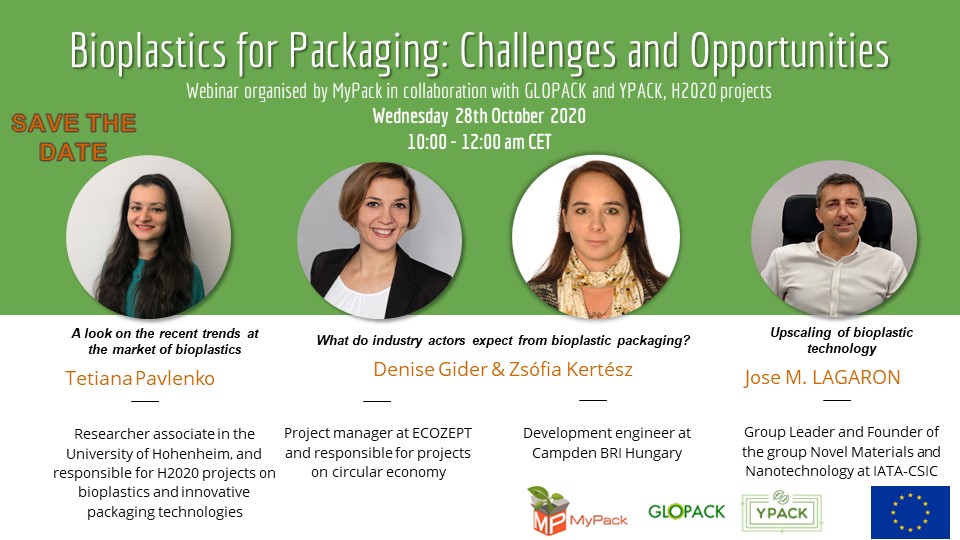
To face these challenges, it was outlined by GLOPACK partners that industries and consumers need further guidance and information about bioplastics. And the YPACK packaging was presented as an example that upscaling to industrial level is possible, using conventional industrial machinery.
“It’s always the same question that we got asked: Can these products actually be upscaled using conventional industrial machinery?” – YPACK coordinator Prof Lagaron
- Lastest trends on the market of bioplastics, with a stronger focus on Europe.
- Market competitiveness of innovative packaging.
- Market barriers that influence the whole development value chain of bioplastics, and ways to overcome them.
- Application of bioplastic packaging in the food industry: overview and projections.
- Industry perception of bioplastic packaging and factors determining its diffusion (e.g. regarding relative advantage, compatibility, complexity, trialability and observability).
- Recommendations for stakeholders in the food packaging sector to align with the common goal of ending plastic pollution.
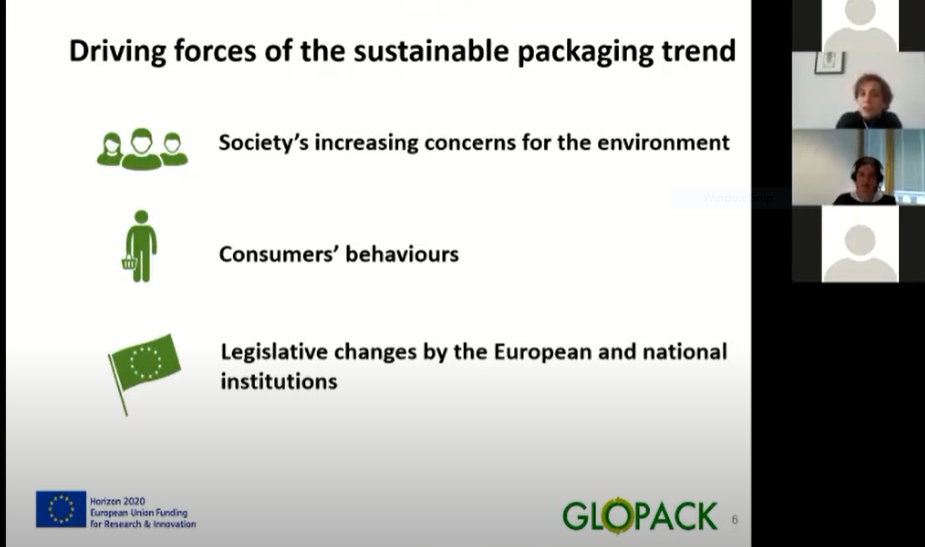
The webinar ended up with a debate which was the opportunity for the audience to ask questions. Most of the questions were related to packaging characteristics and components, comparison between recycling and composting, application of these packaging on certain food items and the Life Cycle Analysis.
2nd webinar: “Under – or over- packaging: how to find the right balance between packaging and food waste?”
The second webinar was held on the 27th of November. Speakers discussed the issue of using packaging to reduce food waste while limiting the environmental impact. Several topics were touched on, such as:
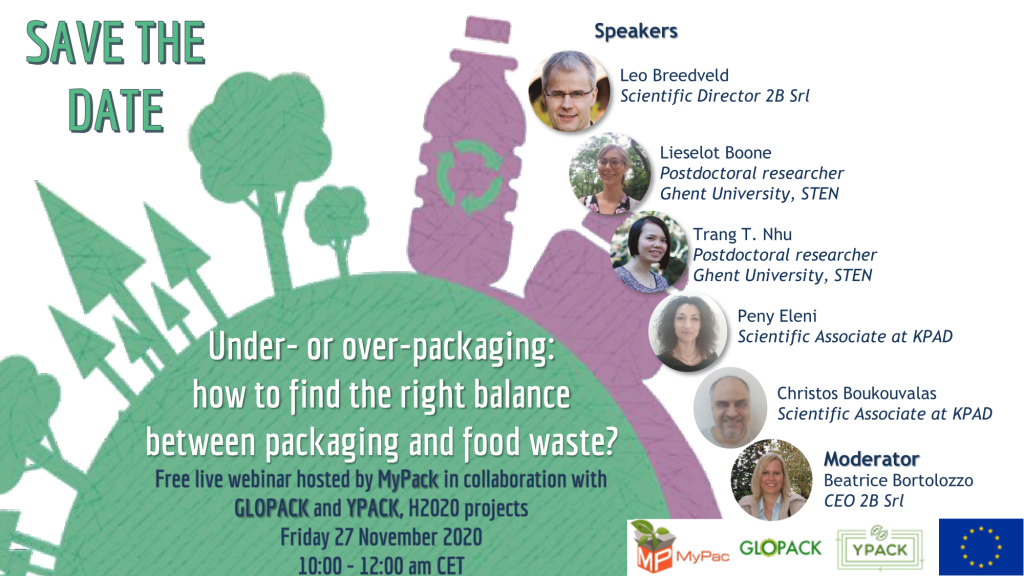
MyPack partners showcased the fact that food often has a bigger impact on the environment than the packaging itself and this analysis should always be related to consumer habits.
“A “one fits all” solution does not exist” – MyPack speaker Leo Breedveld
“Life Cycle thinking is key” – GLOPACK speaker Lieselot Boone
- Guidelines to support the choice of tailor-made sustainable packaging solutions for different food packaging combinations.
- Ecodesign decision tree to guide towards more sustainable “fit for purpose” solutions
- Optimisation of packaging.
- Life Cycle Analysis (LCA) methods, their advantages, limitations and the importance of the reference unit.
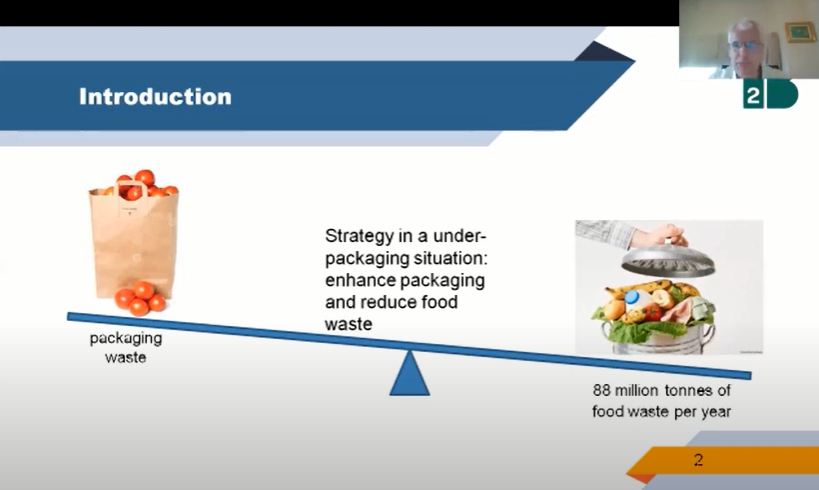
Again the webinar ended with the speakers taking questions, which were mainly about the LCA method, the challenges of these kinds of studies and recommendations for the future.
3rd webinar: “European consumers: perceptions of sustainable packaging”
The last webinar took place on the 15th of December. This time, project speakers presented their learnings on European consumers perceptions of sustainable packaging. The webinar answered the following questions:

Overall, the webinar speakers insisted on the role of education and communication to improve the image that consumers have around packaging and make them understand its importance in the food chain.
“To get the consumer on board, it’s going to be a huge effort that has to be played on multiple fronts with a concerted action of policy makers, communicators, marketers, products developers”. MyPack moderator Dr. Arnout Fischer
- Which are the consumers more interested in sustainable packaging?
- How are European consumers willing to trade off sustainability with other packaging benefits?
- What are their preferences?
- How much are they willing to pay for sustainable packaging solutions?
- Who are the greenest consumers in Europe (in terms of demographic and psychographic characteristics)?
- What are consumers’ responses to design elements and claims?
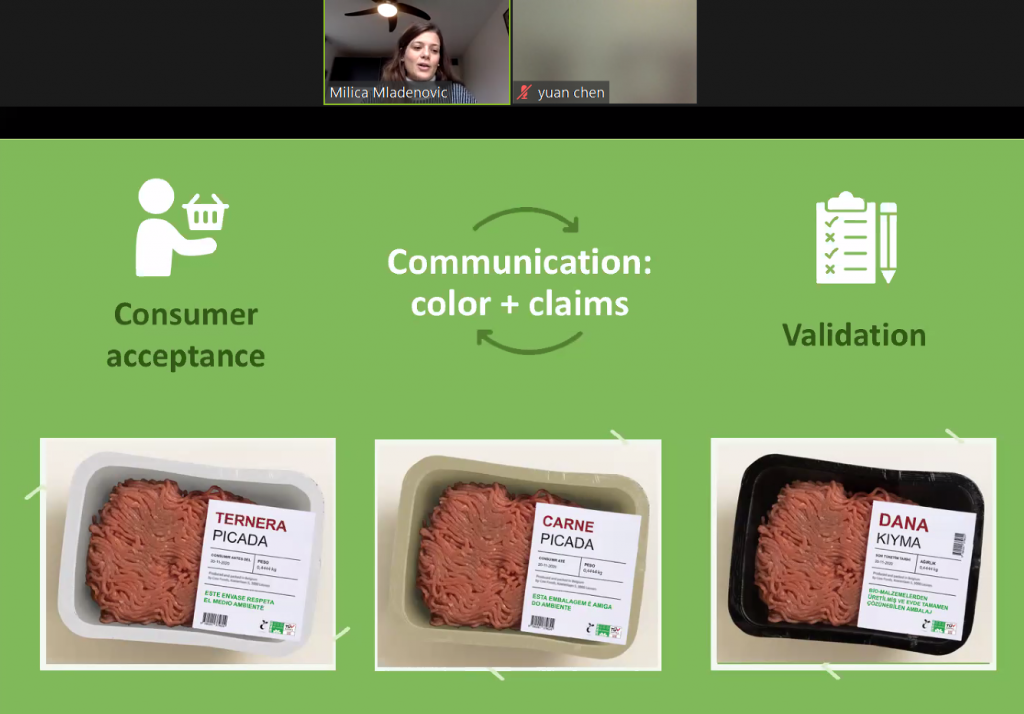
The discussion at the end mainly focused on the future of sustainable packaging, the consumer studies formats and further experiments that could be interesting to plan.
Overall, the webinars were very successful and the collaboration of the three EU-funded projects gave the opportunity for a larger impact and a greater number of stakeholders to take part in the outcomes of the projects.
In case you were not able to attend the webinars in this series you can watch the recordings here:
1st webinar: “Bioplastics for Packaging: Challenges and Opportunities”
2nd webinar: “Under – or over- packaging: how to find the right balance between packaging and food waste?”
3rd webinar: “European consumers: perceptions of sustainable packaging”

